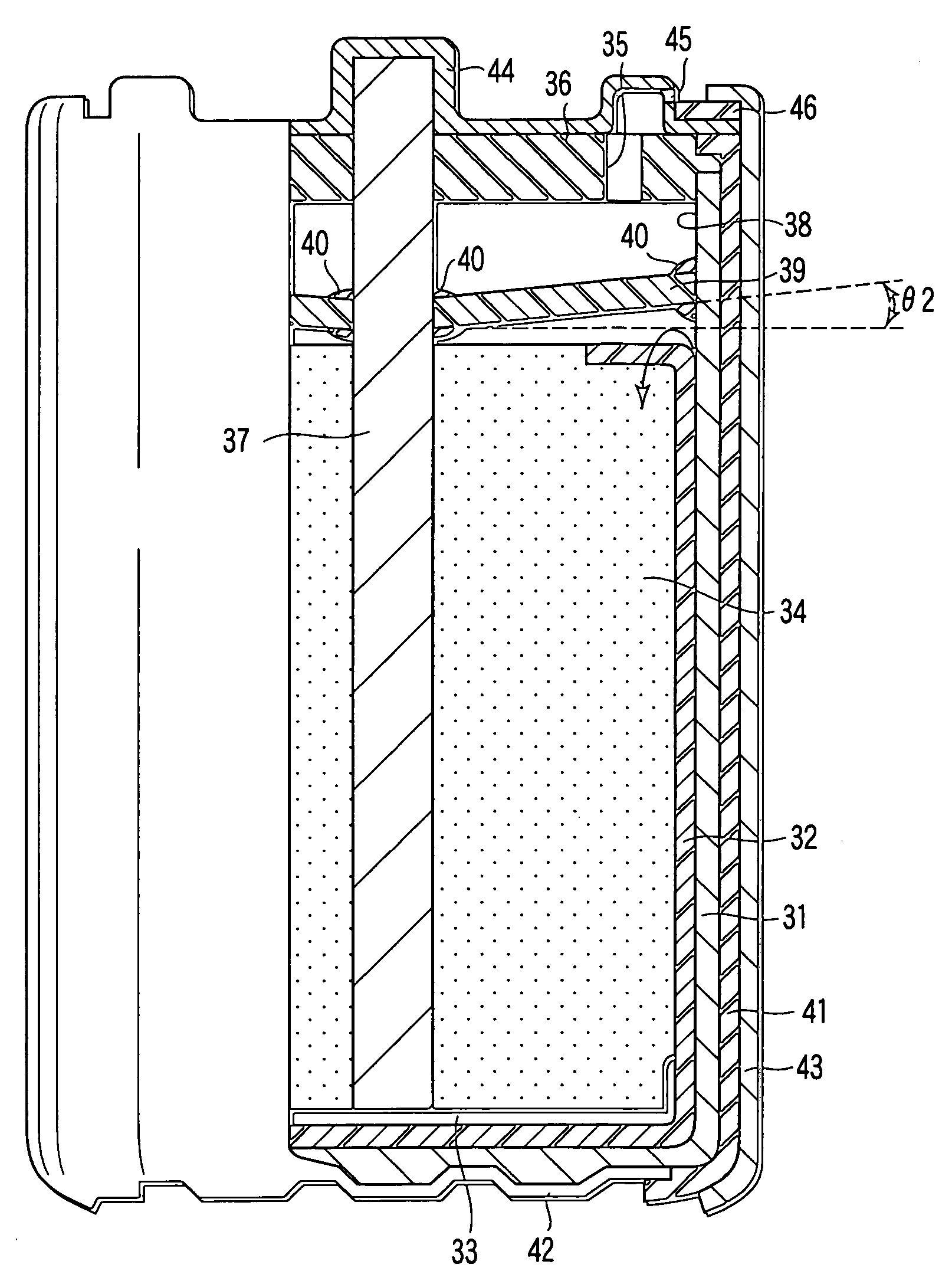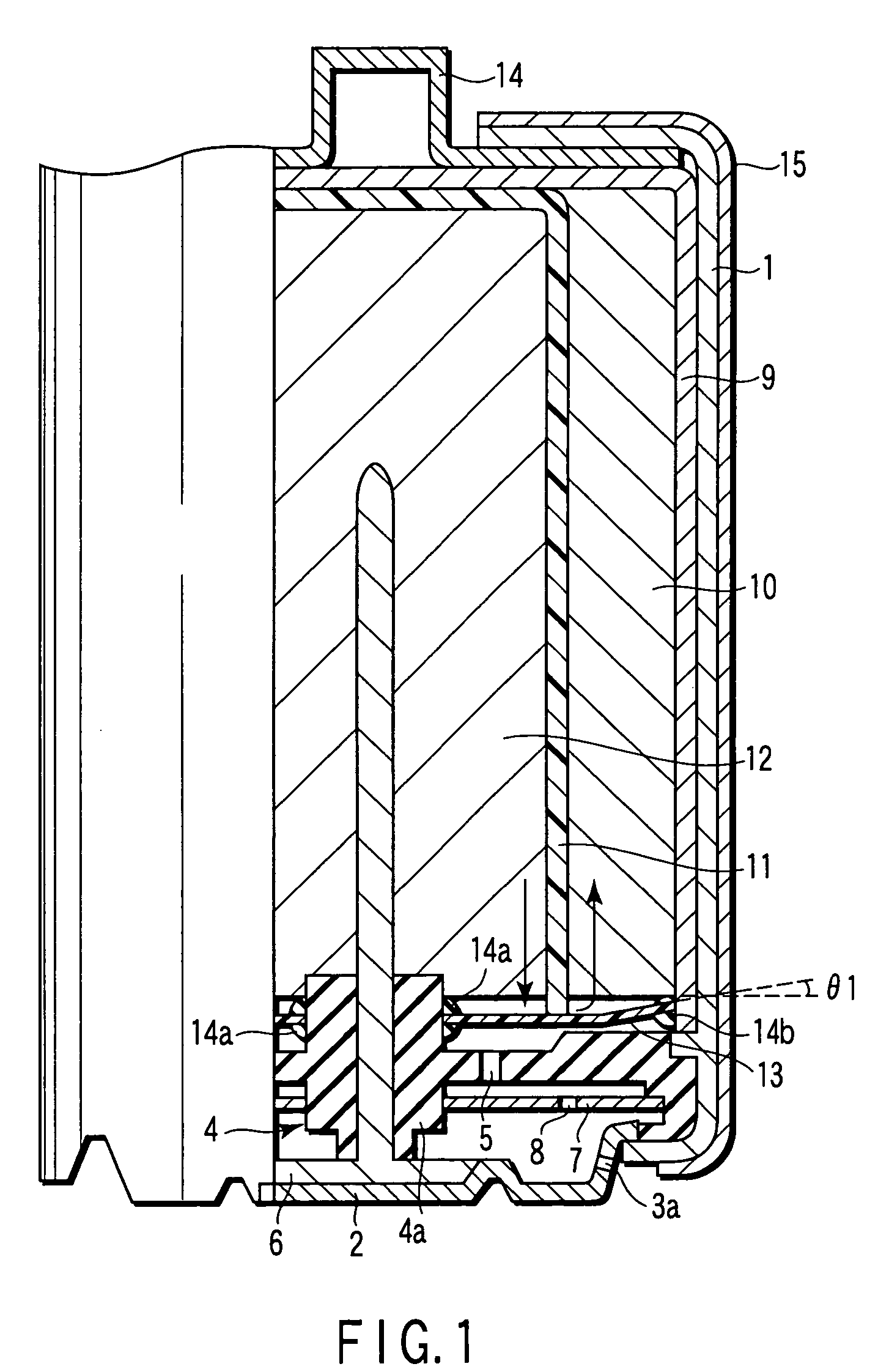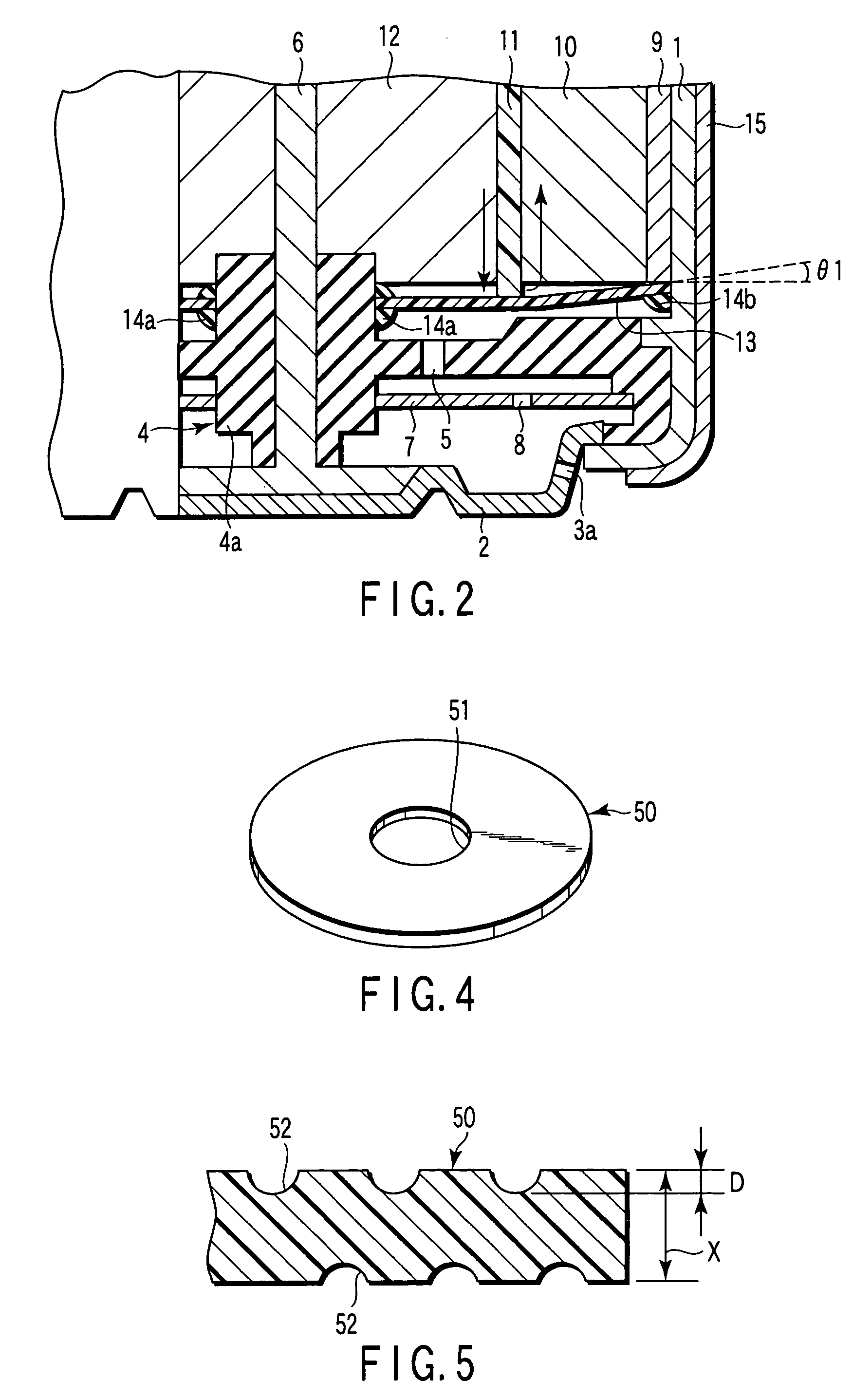Aqueus electrolytic solution primary battery
a technology of electrolysis solution and primary battery, which is applied in the direction of non-aqueous electrolyte cells, cell components, vent arrangements, etc., can solve the problems of low discharge capacity, large self-discharge, large generation of hydrogen gas, etc., and achieves the effect of improving battery voltage and enhancing the ion conductivity of electroly
- Summary
- Abstract
- Description
- Claims
- Application Information
AI Technical Summary
Benefits of technology
Problems solved by technology
Method used
Image
Examples
example 1
[0158]An aluminum negative electrode battery having an alkaline dry battery structure as shown in FIG. 1 and FIG. 2 was manufactured in the following method.
[0159]
[0160]Electrolytic manganese dioxide (MnO2) was used as positive electrode active material, and this positive electrode active material was mixed with 10 wt. % of acetylene black as conductive agent, and 3 wt. % of polytetrafluoroethylene as binder, and the mixture was molded by pressure into a cylindrical form, and a positive electrode mixture was obtained.
[0161]
[0162]A mixed aqueous solution was prepared, which contains 1 M / L of AlCl3, 0.1 M / L of 2,2-bipyridyl, 0.5 M / L of KCl, and 0.2 M / L of Al(NO3)3.
[0163]
[0164]By mixing 95 wt. % of aluminum powder with purity of 99.99% (4N) and 4 wt. % of acrylic acid polymer as thickener, electrolytic solution was added thereto and a negative electrode gel was prepared. As negative electrode current collector, a stainless steel bar was prepared.
[0165]
examples 2 to 7
[0170]Aluminum negative electrode batteries in the same structure as in example 1 were manufactured except that the material of the water repellent organic polymer sheet 13, He gas permeability coefficient at 30° C. of the sheet 13, water repellency of the sheet 13, and the negative electrode material were changed as shown in Table 1. In the table, the low density polyethylene has density of 0.91 to 0.93 g / cm3, and high density polyethylene has density of 0.94 to 0.96 g / cm3. As ethylene fluoride propylene copolymer, Teflon FEP (registered trademark) was used.
examples 8 to 14
[0171]Aluminum negative electrode batteries in the same structure as in example 1 were manufactured except that the inclination angle θ1 of the water repellent organic polymer sheet 13 to the positive electrode mixture 10 was changed as shown in Table 1.
PUM
| Property | Measurement | Unit |
|---|---|---|
| pressure | aaaaa | aaaaa |
| inclination angle | aaaaa | aaaaa |
| thickness | aaaaa | aaaaa |
Abstract
Description
Claims
Application Information
 Login to View More
Login to View More - R&D
- Intellectual Property
- Life Sciences
- Materials
- Tech Scout
- Unparalleled Data Quality
- Higher Quality Content
- 60% Fewer Hallucinations
Browse by: Latest US Patents, China's latest patents, Technical Efficacy Thesaurus, Application Domain, Technology Topic, Popular Technical Reports.
© 2025 PatSnap. All rights reserved.Legal|Privacy policy|Modern Slavery Act Transparency Statement|Sitemap|About US| Contact US: help@patsnap.com



